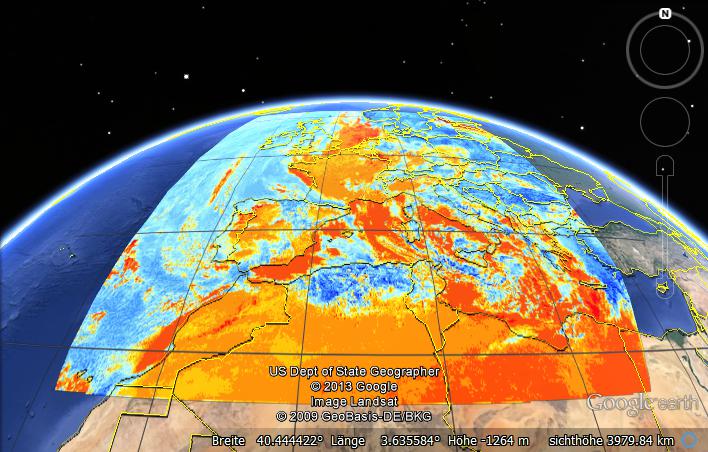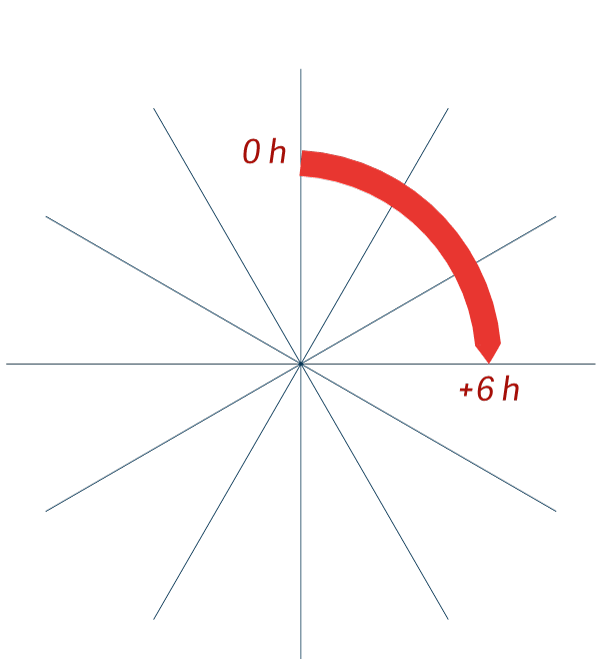The shortest-term forecast CloudMove is based on a novel forecasting concept. Using wind fields from weather models, the currently measured cloudiness is propagated into the future to forecast the radiation for any site worldwide.
CloudMove is updated every 15 minutes and produces 15-minute values for the next 6 hours. The precision (rel. RMSE) averages to about 20% (RMSE of satellite data) for the first forecast steps and goes towards the precision of a standard forecast within the forecast time domain of 6 hours.

Illustration for the shortest-term forecast CloudMove. The Clouds (clear sky index) retrieved from satellite images are propagated based on wind vectors from weather models.
By taking into account the exact positions of clouds, CloudMove's precision is far above the one of standard weather models, especially with respect to the first few hours of a forecast.
With CloudMove Standard you get the following parameters:
- Global radiation [W/m2]
- Air temperature [°C]
With CloudMove Advanced you additionally get the following parameters:
- Direct and diffuse radiation [W/m2]
- Direct normal radiation [W/m2]
- Global radiation on the inclined plane [W/m2]
- Reference yield (for standard module and standard inverter) [Wh/kWp]
